Stories From Our Past
Tackley and the Wider World:
What Coins Can Tell Us
John Perkins, July 2020
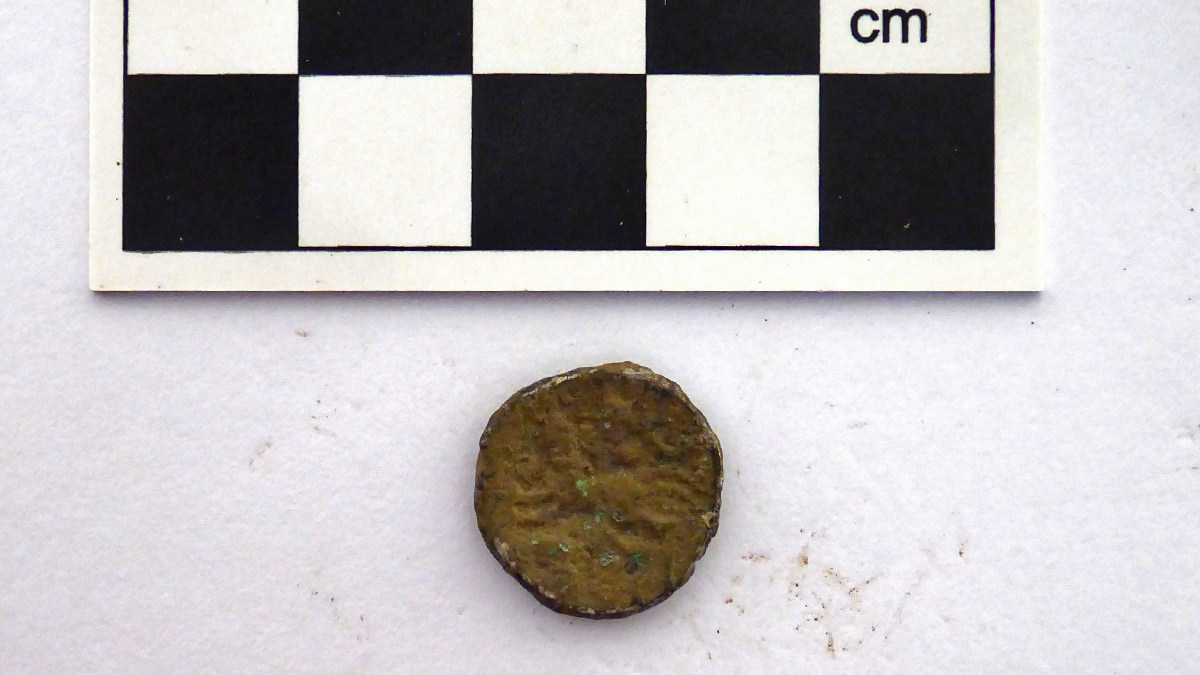 Silver-plated bronze coin, 50–20 BC, issued by the Dobunni tribe whose territory was
centred on the Cotswolds with Tackley at its eastern boundary
Silver-plated bronze coin, 50–20 BC, issued by the Dobunni tribe whose territory was
centred on the Cotswolds with Tackley at its eastern boundary
An obvious way of exploring Tackley’s connections with the wider world would be to look at the
communication routes that have linked our village and its inhabitants into wider networks — routes
which go back well into pre-history.
A less direct way is to look at the coins that have been found in the gardens and fields of the
village. A total of 907 coins and trade tokens, dating from the 3rd century BC to 1850, have
been recorded, 534 of which were collected by William Evetts
and donated to the Ashmolean Museum in 1936 after his
death. For an analysis of the Evetts coin collection, especially the Roman items, see JG Milne
and CHV Sutherland, A Local Collection
of Coins from Tackley, Oxon, Oxoniensia, 2 (1937), pp. 93–100.
Unfortunately, there is no indication of where in Tackley each of the coins in the collection
was found so it is not possible to know if any of them were grouped together – although there is
a possibility that some were part of a late Roman hoard – or if they were linked to any of the
archaeological sites in the village, although it is fairly certain that many of them were.
Fortunately we have more complete records of the coins found over the last few years when
field-walking and metal-detecting, and during excavations. The following list does not yet
include the Roman coins found during the excavation of the
villa and mosaic at Street Farm.
The earliest, and perhaps the most remarkable, are the six bronze Greek coins, minted in Sicily
(Syracuse and Messina) and North Africa (Carthage) between about 275 and 200 BC, which ended up
in the fields around the village. They are now in the Ashmolean. They probably entered Britain
during the hundred years or so before the Roman invasion in 43 AD, long after they were minted.
By then, trade between Britain and the continent was extensive and had reached Tackley.
Further evidence of such connections is the pin of a late Iron Age brooch made to a continental
(central European) design that was found at the
Gibraltar Point excavation and is now
on display in the church.
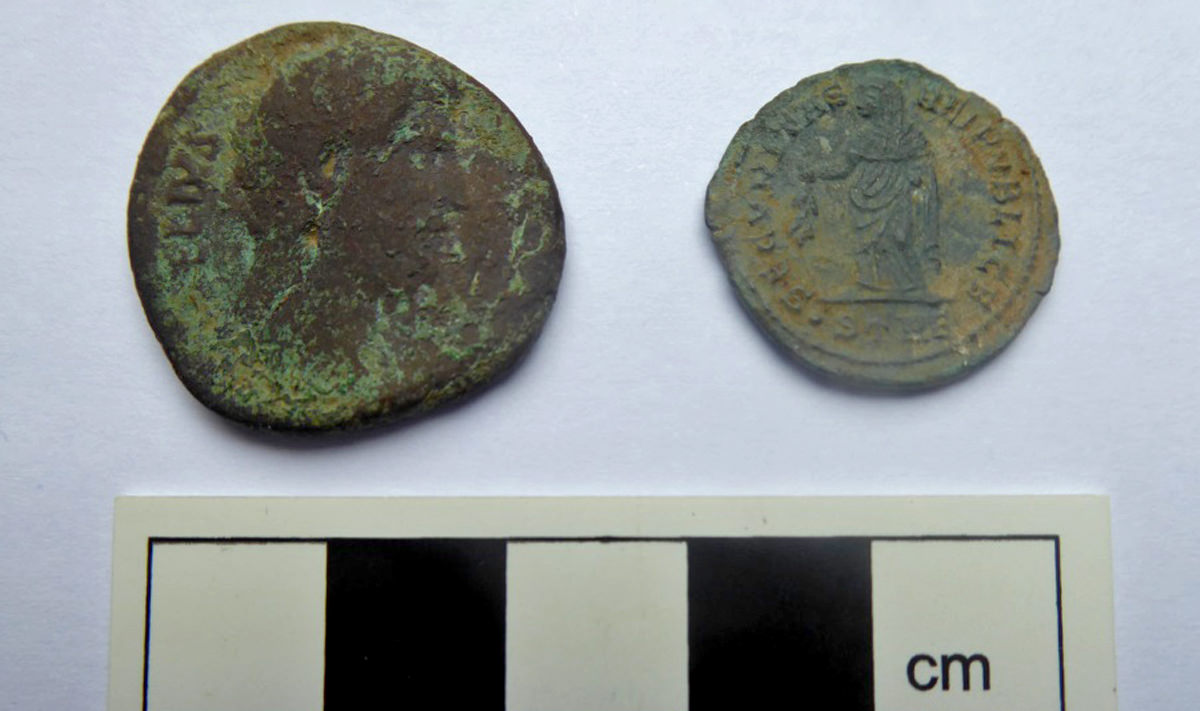 Left: Bronze dupondius of Marcus Aurelius (139–161 AD) minted in Rome. Right: Bronze
nummus of the Empress Flavia Helena, mother of Constantine the Great, minted in Trier,
326–328 AD. The mint mark STRE is below the figure.
Left: Bronze dupondius of Marcus Aurelius (139–161 AD) minted in Rome. Right: Bronze
nummus of the Empress Flavia Helena, mother of Constantine the Great, minted in Trier,
326–328 AD. The mint mark STRE is below the figure.
The sheer number of Roman coins – over 400 – illustrates the extent to which Britain, and
Tackley, were integrated into the Roman Empire. Not surprisingly, the majority date from 260 to
400 AD when the Romanisation of Britain was at its height. The number of coins is also a measure
of the extent to which Roman Tackley became a monetised economy, and the fact that most of the
coins are of small denominations indicates how far down the social scale that process
extended.
In addition, in about 250 AD, Roman coins started to include a series of letters on their
reverse which indicated the mint in which they were struck. Although many of the coins from
Tackley are too worn to show these mint marks, a number (41) do, and again they indicate the
extent of the village’s much wider connections.
Besides London and Rome, coins found in Tackley were minted in Alexandria in Egypt, Arles in
southern France, Constantinople, Cyzicus near Erdek in north-western Turkey, Lyon in central
France, Sisak in Croatia, Thessalonica in Greece and Trier in Germany. They would have arrived
via the complex coinage circulation networks associated with trade: pottery sherds found while
field-walking show that a Roman farmstead near Rousham Road was using olive oil imported from
southern Spain.
Coins would also have arrived more directly, brought in by the army and officials as the
postings of legionnaire and auxiliary units and administrators moved around the empire.
 Places where some of the early Tackley coins were minted
Places where some of the early Tackley coins were minted
The contrast with the post-Roman period could not be greater. Only one coin, a silver
sceatta, dated to the 7th or 8th century, has been found from the Anglo-Saxon period,
and nothing more until the early 13th century — a penny of King John (1199–1216) minted in
Canterbury. It was only in the second half of Elizabeth I’s reign that coins began to be lost in
significant numbers, and even then, not until the 19th century did the number of coins lost
begin to match those in the last 150 years of the Roman Empire.
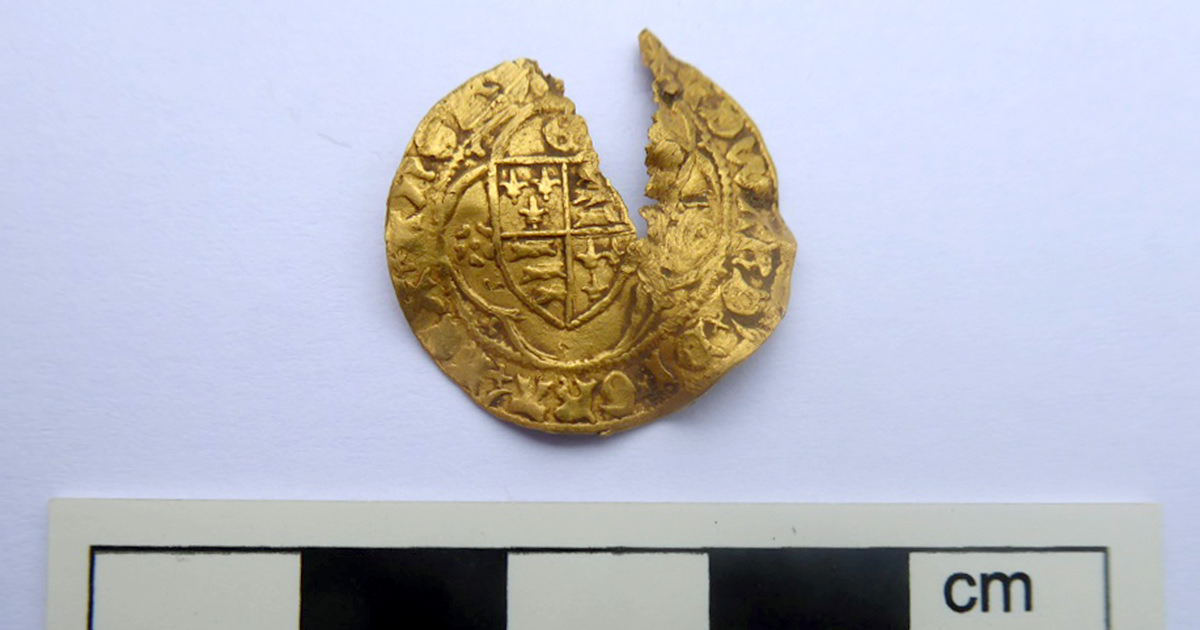 Gold quarter-ryal of Edward IV, 1469–70
Gold quarter-ryal of Edward IV, 1469–70
The lasting economic collapse after the end of the Roman Empire brought with it the decline of
towns, the withering of trade, and – except for wealthy elites – a retreat from money as the
means of exchange. Coins were now struck only in gold and silver. The feudal structures of land
ownership which then emerged, and which dominated medieval England, relied on payments through
labour service rather than coin. Those structures came under pressure, along with the growth of
towns and trade, in the later Middle Ages. As Milne and Sutherland note (p. 99):
“The substitution of money-payments, and the greater freedom of labour, which developed in the
15th century, naturally led to an increase in the circulation of coin. But it was not until
bronze was issued, as a token-money of low value, in the 17th century” that coins dropped
by peasants began to appear in the fields. Although the bronze and copper coins which form the
majority of finds from the 16th, 17th and 18th centuries were of low face value – farthings,
halfpennies, pennies, threepences and groats (four pence) – they were of significant value to
those who lost them. In 1600 a groat represented a day’s wages for an agricultural labourer near
Oxford.
It was in the last decades of the 16th century that the Tackley peasantry began to participate,
at times reluctantly and with resistance, in the increasingly vibrant national market economy,
driven above all by London’s rapid growth – 50,000 inhabitants in 1530; 200,000 in 1600; 590,000
in 1700 – spreading its economic tentacles and thus coinage wider and deeper into rural
England.
This coincided with two Tackley events. The first was the rebellion in November 1596 when a
group of local men, labourers and craftsmen from surrounding villages, met on Enslow Hill
planning to raise support for a march on London. Their protest, which was brutally put down, was
driven by a series of poor harvests and rising prices, outbreaks of disease, population
increase, falling wages, enclosures of common land and the arrival of new landowners bringing
with them new economic attitudes and practices.
The second event, and one which would have epitomised many of the rebels’ grievances, was the
arrival in Tackley in 1613 of the wealthy London merchant John Harborne (1582–1651). In 1612 he
had purchased the two medieval manors of Tackley and in 1615 he built his own new manor house on
land to the north of the village green, part of which was occupied by villagers’ houses which he
cleared.
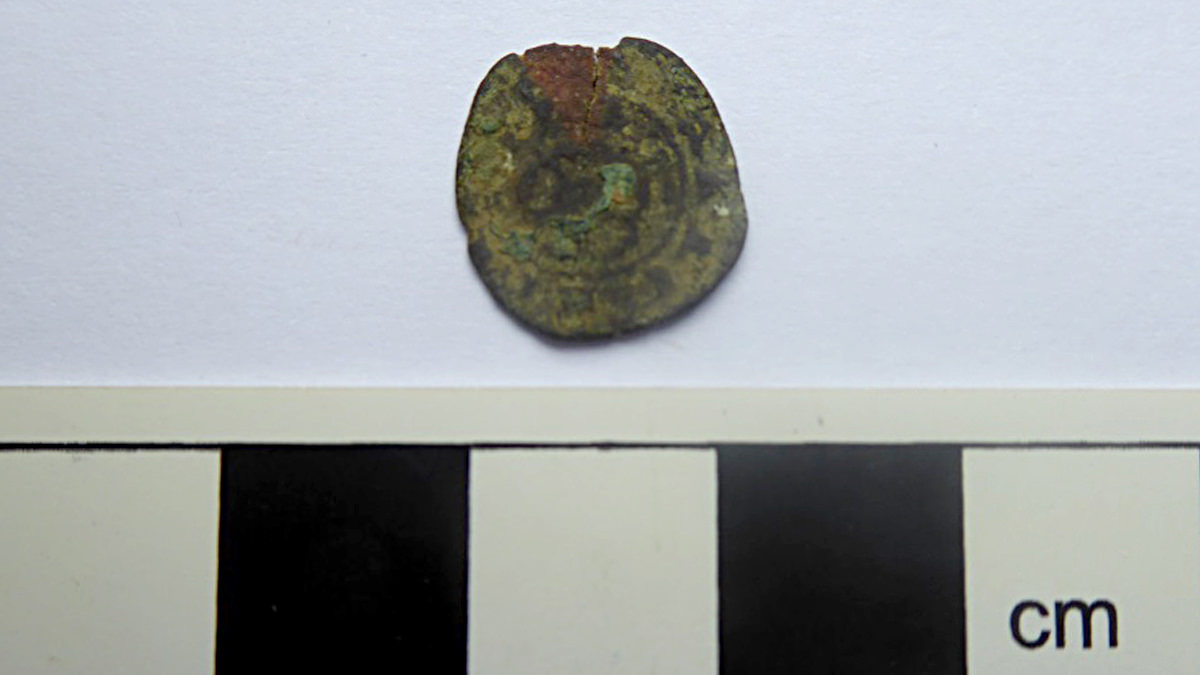 ‘Rose’ farthing of Charles I, with a brass segment inserted to discourage
counterfeiters, 1636–44
‘Rose’ farthing of Charles I, with a brass segment inserted to discourage
counterfeiters, 1636–44
The number of coins lost in Tackley increased rapidly during the 17th century and after, but
only two subgroups of these can tell us about the village’s wider connections. Neither of these
is the official British coinage.
The first group is made up of trade tokens, issued by businesses in place of coins, and
redeemable by them. Those from the 17th century were predominantly local, issued by 11 traders
from Oxford, two from Witney and one each from Bicester, Deddington, Finstock and Hook Norton.
Tackley people did not travel far for work or to market.
But in contrast there are no such local examples among the 17 tokens from the 18th century,
which come from surprisingly far away, including Anglesey, Birmingham, Deptford, Glasgow,
Lancaster, Leeds, Liverpool and Norwich. By now there was much more movement to, from, and
through Tackley. Tackley was part of a country that was becoming much more mobile — one estimate
suggests that around 1750, one fifth of the population of England spent part of their lives in
London.
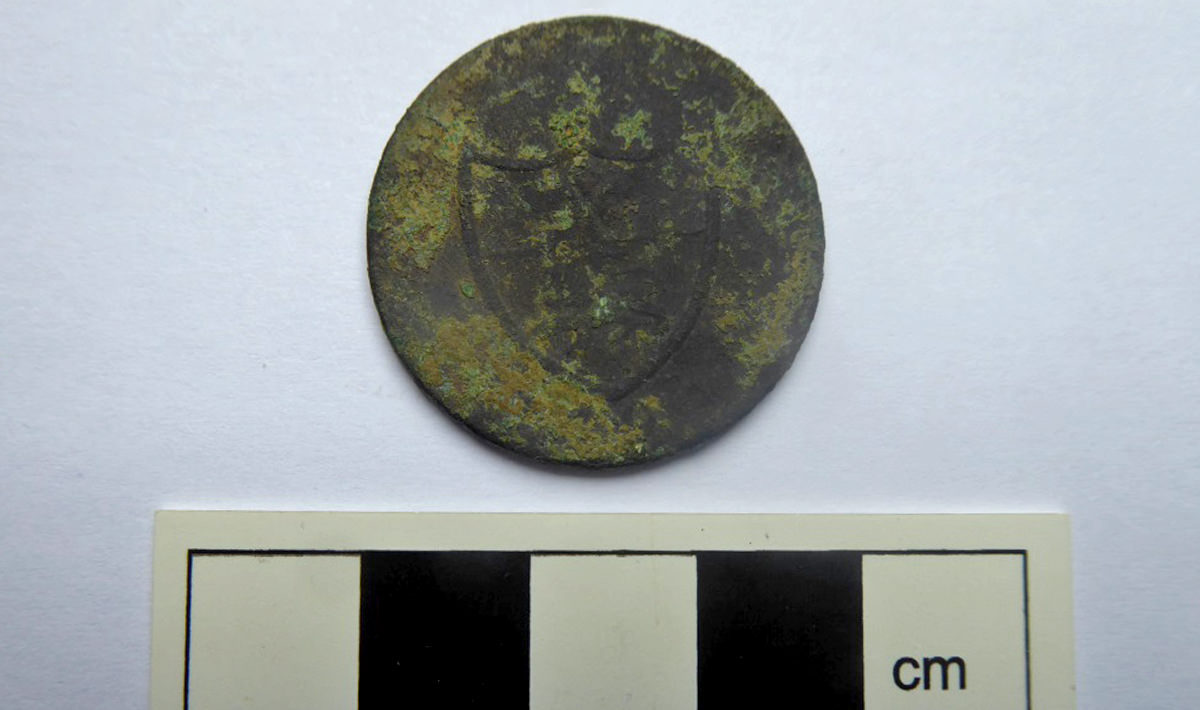 ‘John of Gaunt’ halfpenny trade token from Lancashire, 1790s
‘John of Gaunt’ halfpenny trade token from Lancashire, 1790s
The other subgroup is foreign coins. There are not many – only 16 between 1691 and 1850 – and
they are of small denominations. Most are from Europe, including Holland, France, Portugal,
Denmark, and Russia — a two-kopek piece dated 1811. Five are from the Far East: India, Ceylon and
the Dutch East Indies. One can speculate about how they were obtained and then came to be lost
or thrown away in our fields; their dates do not cluster around periods of war.
Military service abroad might have been one reason for them ending up here. Thanks to Malcolm
Hoare – see his
post
on the History Group Facebook Page on 11 March 2020 – we know of one soldier from Tackley
who served overseas in this period: John Hoare (1760–1804) who fought in Egypt with the 28th
North Gloucestershire Regiment of Foot during the Napoleonic Wars.
Whatever the reasons for these foreign coins being found here, they speak to the growing
experience of the wider world among the labouring families of Tackley.
Acknowledgements
I would like to thank: Anni Byard and John Naylor for identifying over 300 coins for us; Sarah
Young, Peter and Vicky Stringer, and Darren and Mel Denham for carrying out metal-detecting
surveys of several of the archaeological sites in the village; and Charles Cottrell-Dormer,
Daphne Laughton, Tim and Pam Laughton, Andrew and Suzette Peake, and James Price for allowing us
to field-walk and metal-detect on their land.
More Stories From Our Past